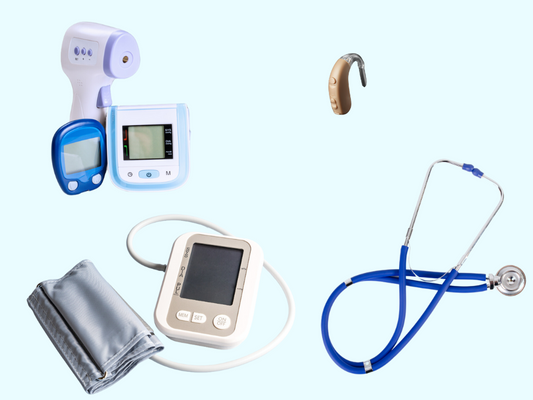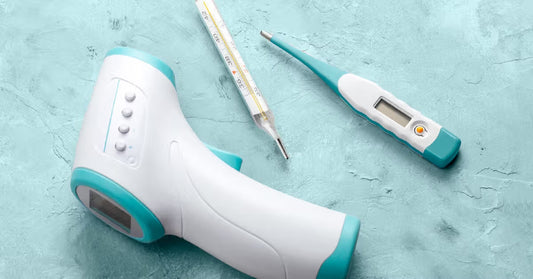
What Are The Different Types Of Gowns Used In Healthcare Settings?
Gowns are useful for defending against germs. They are safety garments that provide a barrier between healthcare professionals and infectious germs. As the market is flooded with different types of gowns, each designed for specific purposes and levels of protection, you might get confused. So here is a guide that solves all your queries related to medical gowns. We will also shed light on some gowns’ unique features and functions.
But before getting straight towards the topic, let’s first discuss what medical gowns really are and how we can classify them.
What are Medical gowns?
In general terms, Medical gowns are a type of protective clothing worn by healthcare professionals to maintain a sterile environment in healthcare settings. These gowns are part of the personal protective equipment, and they play a vital role in infection prevention. Medical gowns can be classified based on the design and purpose of their use. They are made from various materials depending on what they’re intended to do. Here are some common factors for classifications:
- Reusable or Disposable: Gowns can be classified as either reusable or disposable. Reusable gowns can be made of durable materials. They are highly likely to withstand repeated washing and sterilization. This makes them cost-effective over time. Whereas Disposable gowns have been designed to be used only once and thrown away after each patient visit. This prevents cross-contamination.
- Level of Barrier Protection: Gowns are also classified according to their barrier protection level, which is typically classified as low, medium, or high.
- Open-Back or Closed-Back Designs: Gowns can have an open-back design. Open-back gowns provide less coverage but are easier to wear and remove. Closing the back of gowns offers better protection during procedures with high contamination risk.
- Size and Fit: Medical gowns are classified based on size, allowing healthcare workers to find the right fit. A poorly fitting gown can compromise its protective effectiveness.
- Material: The choice of materials for medical gowns is a crucial aspect of their classification and design. Different materials offer varying levels of safety and comfort. For example, surgical gowns need to be highly resistant to fluids, while isolation gowns may prioritize comfort and breathability. Additionally, some materials are better suited for single-use (disposable) gowns, while others can withstand repeated sterilization for reuse.
- Purpose: In addition to the categories above, some gowns are designed for specific uses. For instance, isolation gowns are used to protect healthcare workers from contamination, while surgical gowns are designed to protect the patient from contamination during a medical procedure. X-ray gowns protect the patient from radiation exposure.
- Standard Specification: Canada typically follows internationally recognized standards such as ASTM for the classification and evaluation of medical gowns while also incorporating guidance from national and provincial health authorities to ensure the highest level of protection and safety in healthcare settings.
Different Types Of Gowns Used In Healthcare
Gowns are a vital barrier in the healthcare industry, protecting both workers and patients. Each type of gown has a unique role to play in maintaining safety and hygiene.
Although the materials and purposes of the gowns can vary, their common goal is to deliver the best care possible in the safest manner.
Isolation gowns
The most common type of gowns in healthcare are isolation gowns. These gowns protect healthcare workers from potentially infectious materials or patients. Usually, isolation gowns are made up of lightweight materials that are resistant to fluids, like polypropylene and polyester. They provide protection from splashes and sprays.
Based on the fluid resistance of isolation gowns, they are available in three different levels: basic, medium, and high. Basic isolation gowns can be used in low-risk scenarios, while higher-level gowns should only be worn when the risk of infection is high.
Surgical Gowns
Surgical gowns are exclusively used in the operating rooms. These gowns, made of sterile material, provide high-level protection against contamination. Moreover, these gowns avoid infection and help to maintain a sterile surgical environment.
Surgical gowns typically consist of nonwoven fabric. They are covered with a plastic layer film to prevent liquids from leaking through and to keep microorganisms out. There are disposable and reusable styles. Disposable gowns in Canada are more popular due to ease of use and lower risk of contamination.
Cover Gowns
Cover gowns are also called cover-up gowns and coverall gowns. These gowns provide full body coverage and protect against various hazards, including fluids and chemicals.
When healthcare workers expect to be exposed to potentially hazardous substances, they often use cover gowns. These cover gowns are made of durable materials such as polyethylene and have long sleeves with elastic cuffs and a zipper on the front or back for easy donning.
Lab Gowns
As the name implies, laboratory gowns are used primarily in laboratories. These gowns protect lab technicians and researchers from potential hazards in the laboratory, such as chemical splashes and spills.
Laboratory gowns are usually made of materials that resist chemical penetration. They may include additional protection, such as hoods and aprons, depending on the laboratory task being performed.
Patient Gowns
The patient gown is the open-backed gown that most patients wear in hospitals. The gowns are made to provide comfort for the patient, allow easy access to medical procedures and examinations, and be modest. The gowns are usually tied at the back or feature snap closures.
To ensure comfort, patient gowns are typically made of soft, breathable fabrics like cotton or polypropylene.
Cleanroom Gowns
In controlled environments, such as semiconductor manufacturing and biotechnology, cleanroom gowns are worn. Cleanroom gowns help maintain cleanliness and sterility in controlled environments by protecting them from contamination.
The materials used to make cleanroom gowns have been designed so that they do not shed. These gowns are usually paired with masks, hoods, and booties in order to provide a full protective barrier.
Dental Gowns
Dental gowns have been designed specifically for dental offices and clinics. These gowns are designed to protect dental professionals as well as patients from possible splashes or contaminants during dental procedures.
These gowns are usually made of fluid-resistant material and have an additional layer of protection on the front, where fluids can be more likely to leak. Moreover, these gowns play a vital role in the hygiene and safety of dental practices.
Maternity Gowns
Maternity gowns are also called labor and delivery dresses. They are worn by expectant mothers to help them during childbirth. These gowns offer comfort and easy access to medical monitoring.
Maternity gowns are available in many styles and materials. They range from traditional hospital gowns to more customized, fashionable options. These gowns will make women feel more comfortable and dignified when giving childbirth.
Radiation Gowns
Radiation gowns are also called lead aprons and radiology gowns. As a precaution against being exposed to ionizing rays, they are worn by patients during X-rays and nuclear medicine procedures where ionizing rays may be present. These gowns contain a layer of lead or other heavy metals. This layer absorbs and shields the body against harmful radiation. They also come as full-body suits depending on how much radiation protection is required.
Final Words:
As we have seen, there are a variety of medical gowns that can be worn to help ensure safety and comfort for patients. Proper gown selection and use can help healthcare workers protect themselves and their patients from potential harm.







